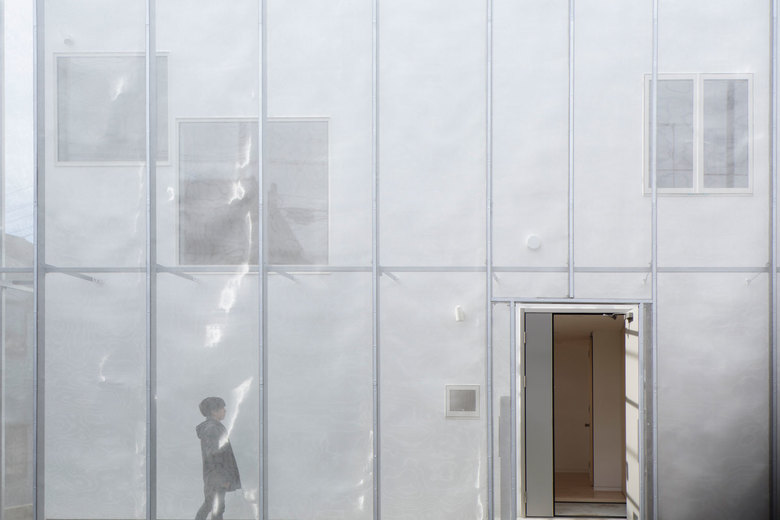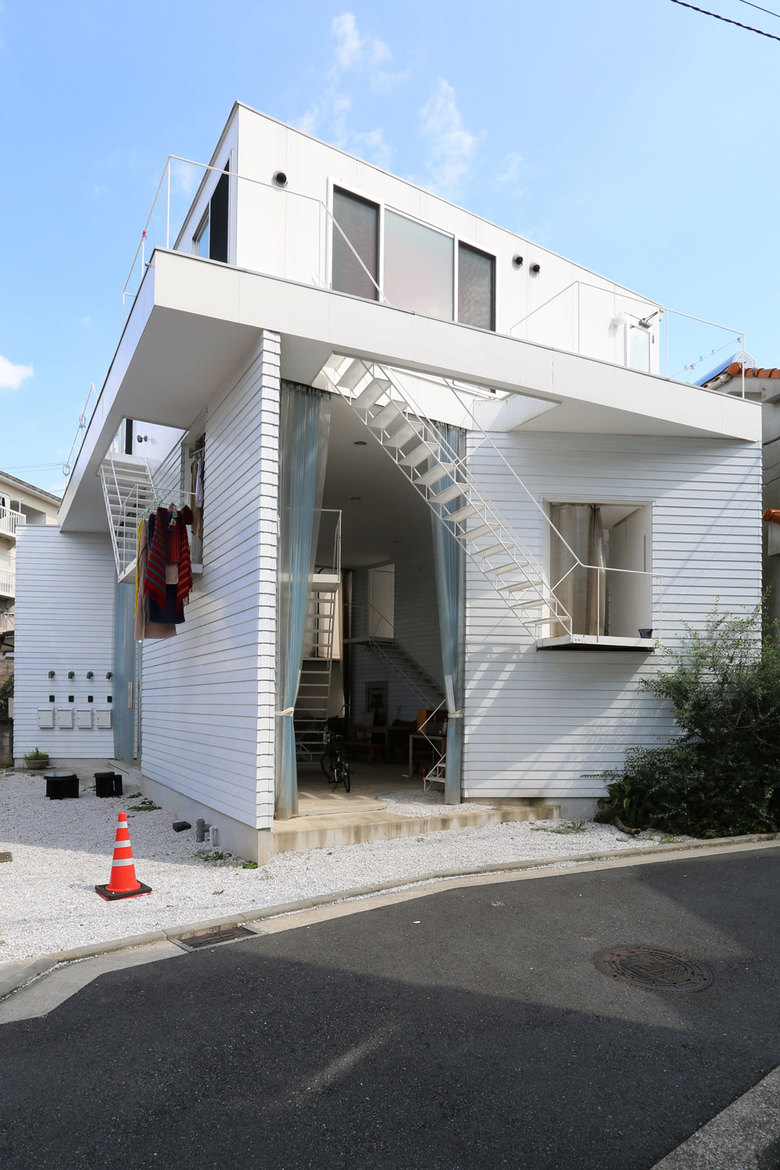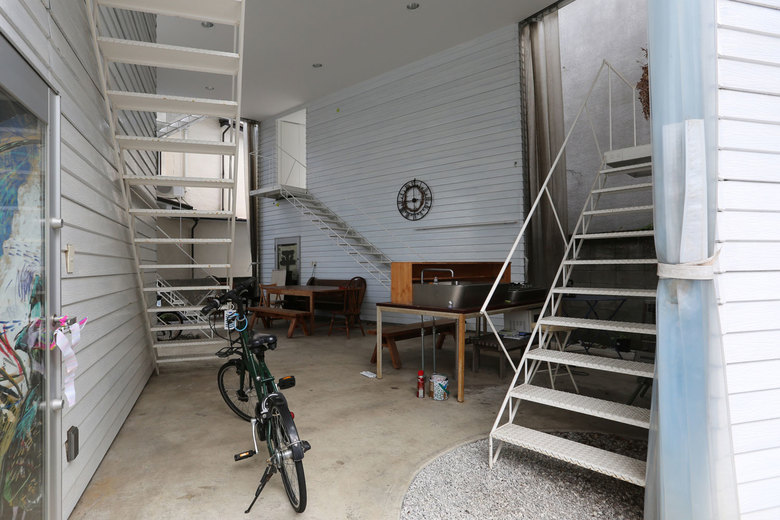Back to the Future?
Ulf Meyer
7. 12月 2015
MoyaMoya House in Higashi-Kurume by Fumihiko Sano – a facade of "nothing"
In Ulf Meyer's previous article, "Architecture of a Thousand Pinpricks," the tone was deliberately polemical. So does Germany really have reason to envy other countries and their globally celebrated architects? Or does the lack of high-flyers mean a gain in quality in the middle range of the architectural profession? Let's take a second look at the current state of things.
In a comment on the 'polemic' (in the original article on German-Architects), Stefan Behnisch, internationally perhaps the best-known contemporary German architect, wrote that in architecture “the era of individual stars” could be "more of a phenomenon of the twentieth century than of the twenty-first." If we look at the first fifteen years of the new century, however, they tell a different story: The star cult(ure) seems to be flourishing in architecture all over the world. That "the office organization, the life plans and interests of the younger generation of architects are different," as Behnisch junior believes, will remain an assertion for the time being. Even in the almost starless architectural landscape of Germany, it is the home-grown starlets and minor celebrities who occupy all the top slots in name-recognition surveys and public awareness. In the latest BauNetz ranking, for example, there is not a single architectural firm that is not centered on individual personalities. What’s more, architecture here stubbornly remains the almost exclusive preserve of white males over forty. Many years – or perhaps decades – will have to pass before Germany produces a female Pritzker Prize winner, such as Kazuyo Sejima of Japan. The Germans' image of themselves as a cultural nation traditionally draws strongly on music, literature, art, and philosophy. Architecture is promoted neither as culture, nor as an export.
The Victory – or Dictatorship – of Mediocrity?
Does the true quality of so-called 'building culture' in Germany lie in its breadth, in sound workmanship, in safety? It would actually be worth doing without the top few per cent and the publicity they bring if that were necessary in order to have a solid, broadly based 'building culture' – except that it is wrong to suppose that one excludes the other. Not only is it possible to have high quality both in the middle of the pack and among the leaders, but the two aspects even reinforce each other. Without high-flyers, there is a risk of sinking into mediocrity. Over-regulation and restrictive requirements for fire prevention, thermal insulation and environmental compatibility create standards that can act as a brake on creative innovation – but can also spur it on. Smaller countries often lack the political and bureaucratic capacity to impose a comparable regulatory burden, yet their buildings seem none the worse for it.
Up to now, the progressive harmonization of Europe's legal and standards systems has created little more than an additional level of politicians and bureaucrats without having fully opened up a fair and transparent market for architectural services throughout the continent. The increasingly blinkered focus on Europe also carries a risk that the profession's navel-gazing will merely be continued at the next level up, although Europe as a whole is rapidly losing relevance in global terms: politically, militarily, and economically in any case, but also culturally and artistically – and that includes architecture and urban planning. Expertise in making megacities more habitable, for example – the planning know-how most urgently needed around the world – is naturally scarce in Germany: Here the federal structure devolves power to many different state capitals and there is only one reasonably large city, which is nonetheless tiny compared to London, Paris, Moscow, or Istanbul, and positively microbial if set beside the gigantic metropolises of East Asia. Because many of the world's pressing problems simply don't apply here, the local architects and town planners don't develop any solutions to them on the ground.
Living without EnEV (Energy Conservation Standard): Osamu Nishida Kanagawa Apartment House in Yokohama (Photo: Author)
Rampant Regulation and a Different Understanding of Time
In Japan, they build not for eternity, but usually only for a generation. The average life expectancy of a building is approximately 23 years. Given the ecological and economic considerations, that may be more than disconcerting to German architects, but it does result in a more relaxed and bolder approach to design. Although building for eternity (ostensibly, at least) may seem to be in the interests of sustainability, it means that mistakes can hardly be corrected and must be put up with for a long time. The level of home-ownership in Germany is sensationally low at 53% (on a par with Hong Kong, the city of rental apartment blocks!) and this adds to the difficulty that young architects, in particular, have in finding small-scale commissions from middle-class clients. Almost all of the owners who build in this country are large companies or institutions, which are generally averse to risk and therefore work only with large practices that can point to an established track record.
The rigid fee scale makes it so costly to employ architects that categories such as the private house have disappeared from the spectrum of work available to young architects, although housing as such is the oldest, the primal, task of the building trade – and in the early stages of a career, especially, it offers an ideal opportunity to gain experience and exercise creativity.
The energy-efficiency ordinance and other (in a global comparison, extremely rigid) statutory regulations make it so expensive to build in Germany that only the wealthy can afford to own a detached home. More space in our cities is allotted for cars to park on than for ordinary people to build on. Japan, in contrast, prohibits parking on any land belonging to public thoroughfares. When you apply for a vehicle license plate, you must be able to show that you have a parking space at both ends of your journey – a nearly insurmountable hurdle in Japan's crowded cities. This simple rule has given rise to an urban infrastructure system that makes it a pleasure to take the train or even to go on foot, while the cities are packed with small and miniscule plots that require creative, tailor-made solutions from young (or established) architects.
Living without EnEV (Energy Conservation Standard): Osamu Nishida Kanagawa Apartment House in Yokohama (Photo: Author)
Deregulation in Great Britain
The majority of German architects are uncertain whether deregulation would benefit or harm their profession – with some justification, because architecture is not a service sector in the pure, classic sense, subject to the laws of the free market, and so the abolition of the mandatory fee scale could threaten their livelihoods. Nevertheless, in countries such as Great Britain that have abandoned, in the words of London architect Bernhard Blauel, "the protectionist system of the nineteenth century in favor of the Wild West" by deregulating the market for architectural services, the experience has not been a wholly bad one. Nowadays, the Royal Institute of British Architects (RIBA) only issues fee recommendations, and the prices for an architect's services are negotiable. In the meantime, the British fee scale has been distilled onto an A4 sheet. Unlike the situation in Germany, however, the RIBA has great influence over the education of architects and may withdraw its recognition of a university course. For the profession, the initial consequence of liberalizing architectural services was a concentration of the workforce: of the (mere!) 30,000 architects in the UK, almost exactly a half now work in one of the 3,000 largest practices.
The late Martin Pawley, once the best known architecture critic in London, wrote that "old architectural values, such as durability and specificity of place and shape, have become as archaic and irrelevant as the traditional social values of community." Sentiments of this kind still sound unfamiliar to German ears – as yet. Ultimately, economic viability and good architecture do not have to be mutually contradictory – quite the contrary, in many cases. German architects could do worse than to look beyond their own borders: It might help them to decide on a position and redefine their profile as a profession – before somebody else does it for them. One possible strategy would be to expand the architect's scope of work and occupy additional niches, but some experts propose the contrary tactic, that of concentrating on the architect's core skill, design. Will it be a case of "one step forward, two steps back"? At stake is the status of architects as (to quote Charles Jencks) "kings of infinite space."
Ulf Meyer studied architecture in Berlin and Chicago. He has worked for Shigeru Ban Architects in Tokyo and has taught at Kansas State University, the University of Nebraska-Lincoln, and Tamkang University in Taiwan. He currently lives and works in Berlin as an architectural journalist.
Translated by Richard Toovey from the original on German-Architects.


